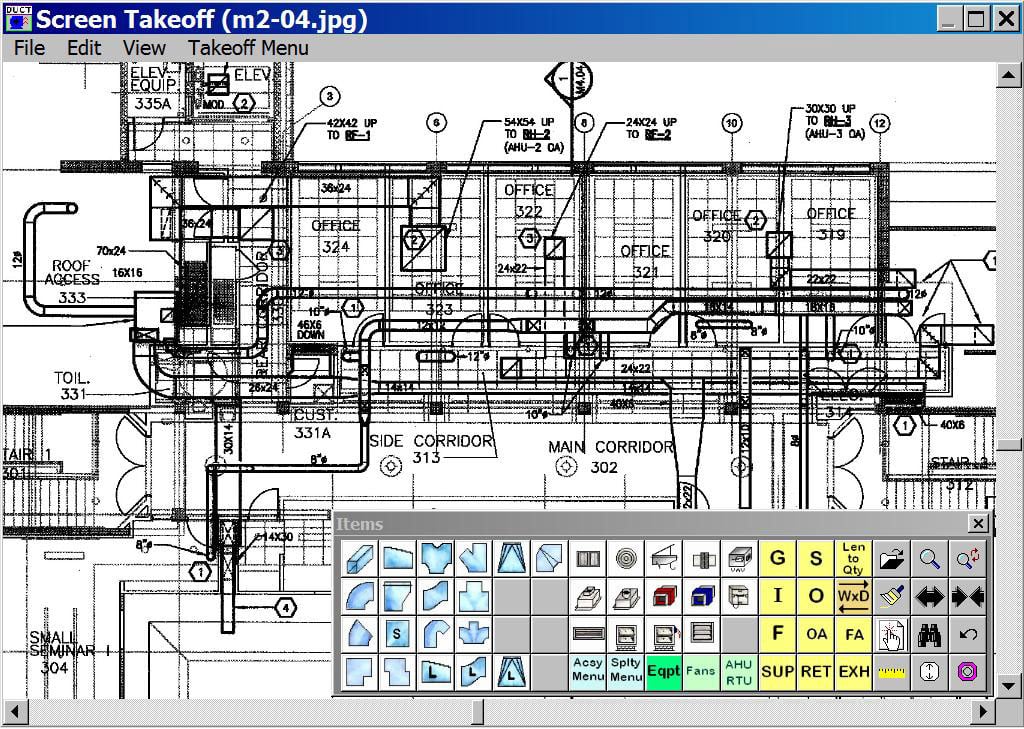- Blog
How To Estimate HVAC Projects
Successful HVAC estimating is the first vital step and cornerstone for successful HVAC contracting. An accurate estimate should include a detailed listing of the direct costs for materials, labor, equipment, sub contractor costs (insulation etc.), indirect overhead, taxes, permits and profit. The primary goal of the estimate is to detail all costs as they will likely occur in the project scope while meeting specifications and performance criteria. It should be noted that there are three types of estimates and these basic elements pertain to all; Conceptual Estimates, Semi-Detailed Estimates and Detailed Estimates. There are several very basic steps when you perform an estimate.
1. If you are estimating an HVAC project based on a specified plan it is basic and critical to determine the scale of the plans being used as scale may vary from one project to another. The quantities, linear footages and sizes included in the plan are based on a specified scale. When you are conducting measurements if the scale is not correct all of the measurements will be compromised if they are not based on the correct scale. If you are detailing a project for an estimate include the scale on your drawing.
2. Calculate the overall quantities, linear footage, sizes, equipment and specifications for the project and determine if the performance criteria specified is met. Determine if the specifications make sense and appear to be valid. Scan the overall project scope to determine if all items appear to be correct for the general scope of the project. After completion of a quantity, linear footage, per piece and equipment takeoff is completed prepare a Project Description and Budget Cost after phase one. Continue with performance of a detailed quantity takeoff including linear footage, per piece takeoff including equipment items, sub contract and purchased items. Detail the takeoff information on a Per Piece Takeoff Sheet breaking down the items by type and piece. The information contained in the Per Piece Takeoff breakdown should be used to prepare a Quantity Takeoff Sheet summarizing quantities and overall labor. After completion of a Quantity Takeoff Sheet prepare a separate Bid Recap Sheet and Markup Summary for the project. All of the detailed information contained in each of the forms flows from the original takeoff and is broken down separately on these sheets in order to review the detailed takeoff content. The use of these basic estimating forms provide important details for the written record of an estimate and enables the estimator to review each phase of the takeoff in detail. All of the basic forms mentioned here are detailed in the Wendes Mechanical Estimating Manual and are helpful in preparing HVAC estimates.
3. Purchased items with detailed equipment requirement for the project estimate should include all sizes and types of equipment to be purchased along with other materials and miscellaneous items to be purchased. Sub Contract labor should be detailed and quoted separately. A separate Quotation Sheet for these items will be required as prices for items are quoted by the outsourced vendor and sub contractor. Maintain a written copy of quoted prices for future reference on Quotation Forms. It is important to choose competitive, qualified sub contractors and vendors in order to maintain accurate pricing and project performance integrity.
4. The fundamentals for preparing all types of HVAC estimates are similar but the range of detail required for an estimate will vary dependent on the type of estimate required for a given project stage. The detail of an HVAC Estimate is determined based on the complexity of a project and the detail and quality of information provided for estimating the project scope. In some cases projects are estimated in stages. There are three basic types of estimates: Conceptual Estimate, Semi-Detailed and Detailed Estimates all of which are covered separately in the Wendes Mechanical Estimating Manual.





